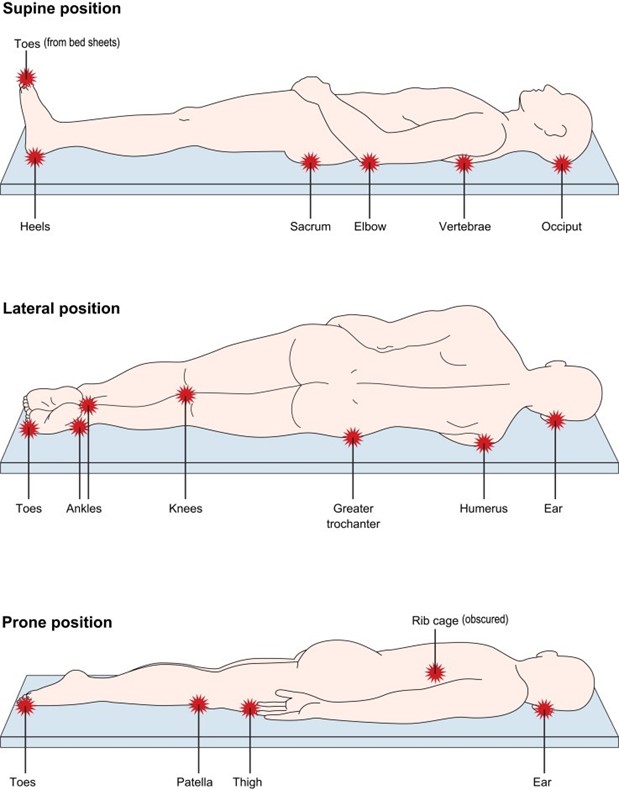A nurse is helping to place a client into the prone position. The nurse should use a small pillow to relieve pressure from which of the following areas of the client's body?
Occiput
Breasts
Heels
Coccyx
The Correct Answer is B
The occiput refers to the back of the head. Placing a small pillow or padding under the occiput can help relieve pressure and provide support to the client's head and neck when they are placed in the supine position.
Breasts: When in the prone position, breasts may be compressed or flattened. To relieve pressure, it may be necessary to use positioning techniques that distribute weight evenly and avoid direct pressure on the breasts, such as using cushions or foam pads to support the chest and torso.
Heels: The heels are prone to pressure ulcers when a client is lying in the supine position for extended periods. To relieve pressure, it is important to use proper heel offloading techniques, such as placing heel protectors or pillows under the lower legs to elevate the heels off the bed surface and prevent direct pressure.
Coccyx: The coccyx is the tailbone region at the base of the spine. When in the supine position, pressure on the coccyx can be relieved by using a cushion or padding under the pelvic area, specifically under the bony prominence of the coccyx, to reduce direct pressure and provide comfort.

Nursing Test Bank
Naxlex Comprehensive Predictor Exams
Related Questions
Correct Answer is A
Explanation
A.Emptying the ostomy pouch before removing the skin barrier reduces the risk of spillage and makes the procedure less messy. It is also more comfortable for the client and helps prevent leakage of stool onto the skin, which can cause irritation.
B. It’s generally recommended to change an ostomy appliance when the bowel is least active, such as before meals or several hours after eating. Changing it one hour after breakfast may coincide with increased bowel activity, which can increase the risk of leakage and make the change more challenging.
C.Moisturizing soaps should be avoided when cleaning the skin around the stoma because they can leave a residue that interferes with the adhesion of the skin barrier, potentially leading to leakage. The nurse should use a mild, non-moisturizing soap or just water to clean the area to ensure proper adhesion of the appliance.
D.The opening on the skin barrier should closely match the size of the stoma, with a slight gap of about 1/8 inch (0.3 cm) around it to avoid pressure on the stoma while also protecting the surrounding skin. Creating an opening that is 0.5 inches (1.27 cm) larger than the stoma would leave too much skin exposed, increasing the risk of irritation and infection.
Correct Answer is B
Explanation
A. Incorrect. Plaster casts are not waterproof and can become weakened if exposed to moisture, so showering with the cast is generally not recommended.
B. Correct. Elevating the extremity can help reduce swelling and promote comfort after the cast is applied.
C. Incorrect. Using a hair dryer inside the cast can cause burns and is not recommended for relieving itching.
D. Incorrect. Keeping the cast covered is not necessary, and covering it can trap moisture, potentially causing skin problems.
Whether you are a student looking to ace your exams or a practicing nurse seeking to enhance your expertise , our nursing education contents will empower you with the confidence and competence to make a difference in the lives of patients and become a respected leader in the healthcare field.
Visit Naxlex, invest in your future and unlock endless possibilities with our unparalleled nursing education contents today
Report Wrong Answer on the Current Question
Do you disagree with the answer? If yes, what is your expected answer? Explain.
Kindly be descriptive with the issue you are facing.
